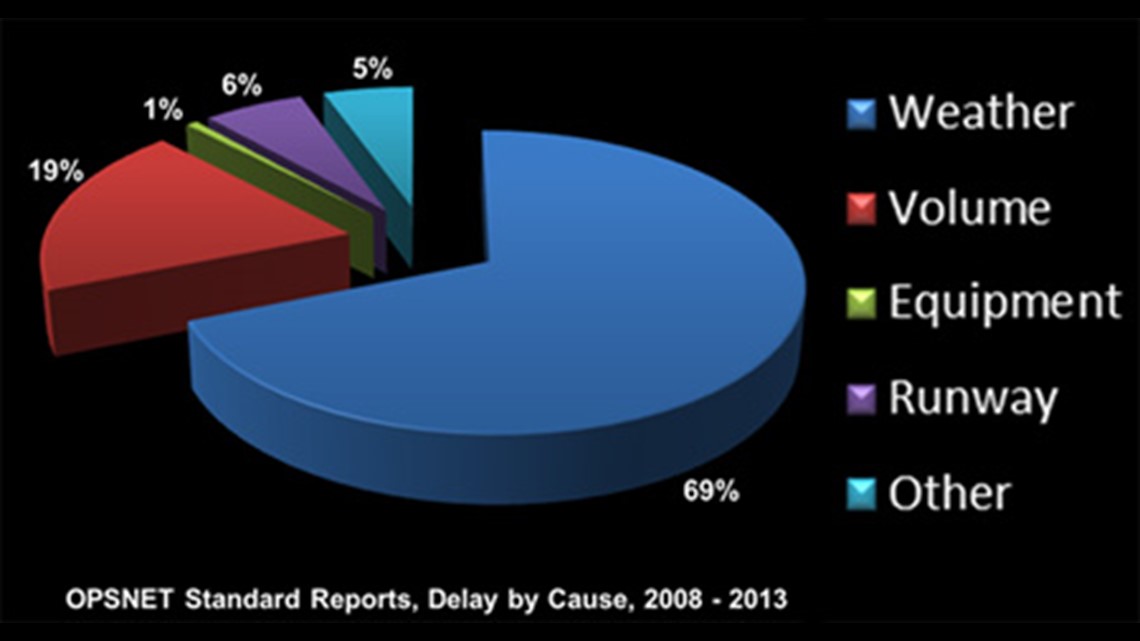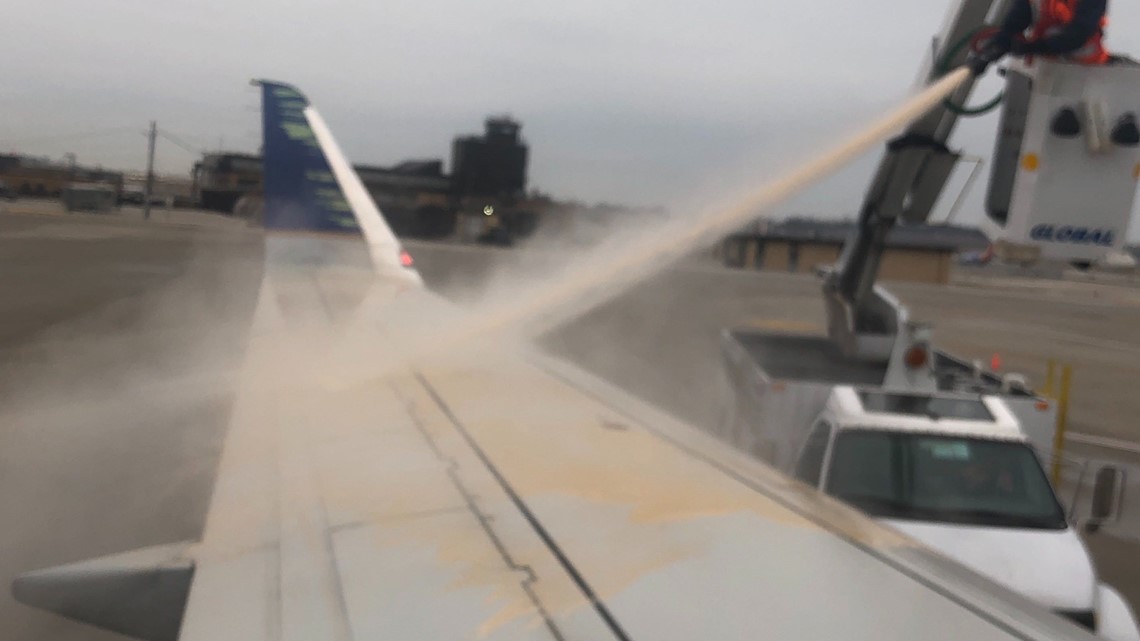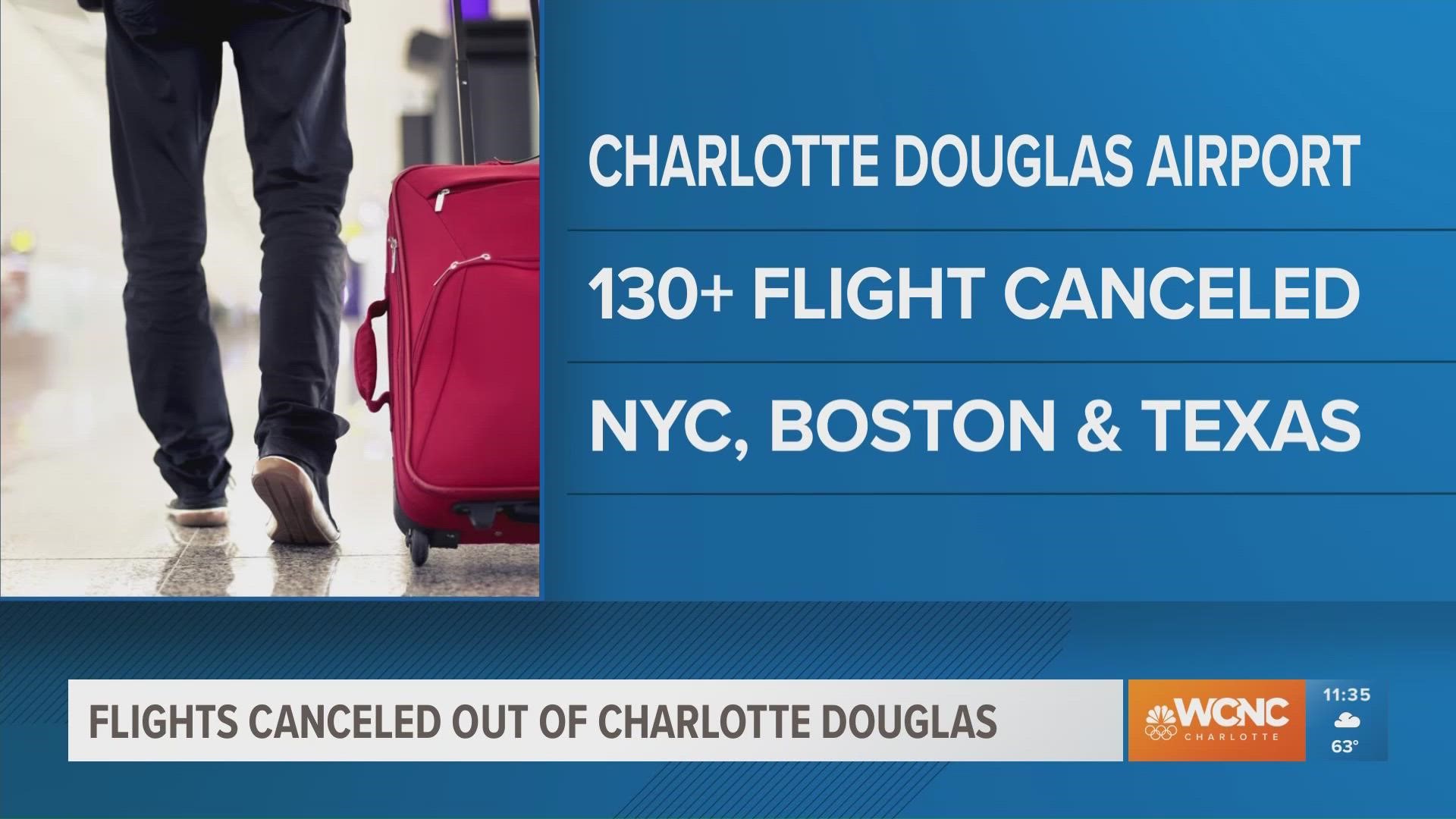CHARLOTTE, N.C. — Delayed flights can be frustrating. They can lead to cancellations, missed connections and a ton of stress for people hundreds of miles away from home.
And if you're caught in this situation, chances are the weather is the reason why.
According to the Federal Aviation Administration (FAA), weather accounts for approximately 70% of flight delays. Thunderstorms, lightning, rain, fog, wind, snow and ice can all impact flights taking off or landing. But the type of weather causing a delay differs throughout the year and also the geographical area of the country.
For example, here in the Carolinas, you’re more likely to have delays due to rain and thunderstorms during the summer months. That likely won't be the case during the winter months. It can also depend on the time of day, as fog and low clouds are more likely to impact a flight in the morning compared to the afternoon.


Low visibility
Clouds themselves aren't dangerous but it’s the low visibility caused by low clouds and fog that’s a concern. Fog is often location-specific and patchy in nature, but in rare cases can last for hours. Fog is more likely to impact takeoff rather than landing since many planes are equipped with automatic landing equipment.
Another visibility concern is the rare case of heavy rain that’s dense enough to impact sight. In general, though, rain doesn’t typically impact flight planning unless combined with high wind or thunder and lightning.
Severe weather
Most modern aircraft are built to withstand high winds. It can make for a turbulent flight — and for those motion sickness sufferers, I feel you — but it’s generally not a huge concern. Unless it’s severe turbulence caused by nearby thunderstorms.
The good news about thunderstorms is during the summer months, they’re normally convective. This means they’re localized in a few spots and not along a strong cold front. This makes it easier to fly around them. Flights can typically maneuver themselves and land safely. In the rare case that you’re rerouted to another airport, flights will refuel and wait for the storms to pass.
Wintry weather
During winter, there are winter storms to consider. Most airplanes are equipped with deicing equipment when in the air, however, decision-makers have to factor in the deicing process before a flight, after a flight and the condition of the runway. The caveat to this is freezing rain, which can cause rapid buildup. This is why weather forecasts are so important to pilots and airports.
In the case of severe weather, no matter the time of year, airports and airlines may work together to implement “planned cancellations” to some flights. This may seem counterproductive, but it helps minimize delays to remaining flights and other unforeseen circumstances; such as crew members being unable to get to the airport due to bad weather.


Remember, planes are being used consistently throughout the day, so delays are sometimes a domino effect. If there’s severe weather that causes delays on Thursday, that may impact your Friday flight. Under the Code of Federal Regulations, there are minimum rest requirements for pilots both before and after duty. There are different requirements based on the length and whether they’re flying with another pilot.
Contact Brittany Van Voorhees at bvanvoorhe@wcnc.com and follow her on Facebook, Twitter and Instagram.
Flashpoint is a weekly in-depth look at politics in Charlotte, North Carolina, South Carolina, and beyond with host Ben Thompson. Listen to the podcast weekly.
SUBSCRIBE: Apple Podcasts || Spotify || Stitcher || Google Podcasts
All of WCNC Charlotte's podcasts are free and available for both streaming and download. You can listen now on Android, iPhone, Amazon, and other internet-connected devices. Join us from North Carolina, South Carolina, or on the go anywhere.

